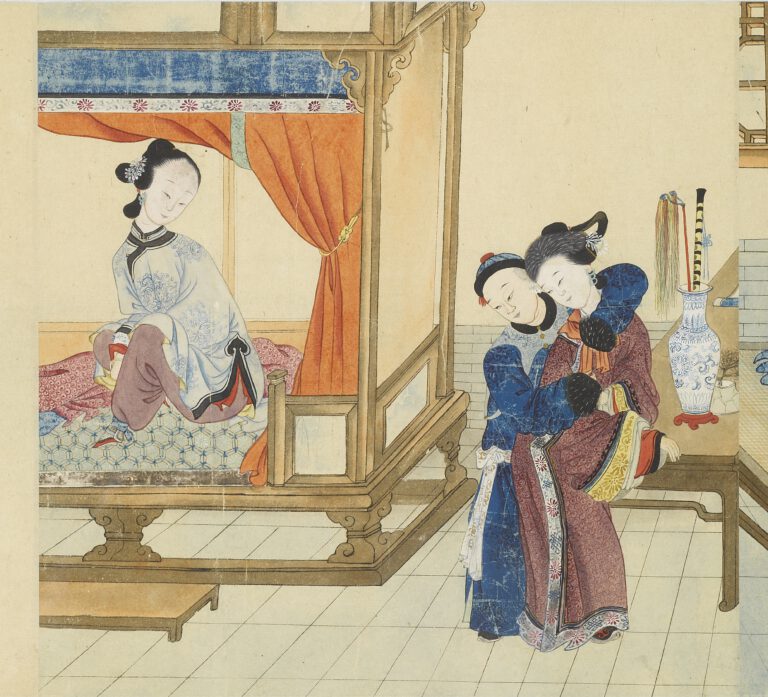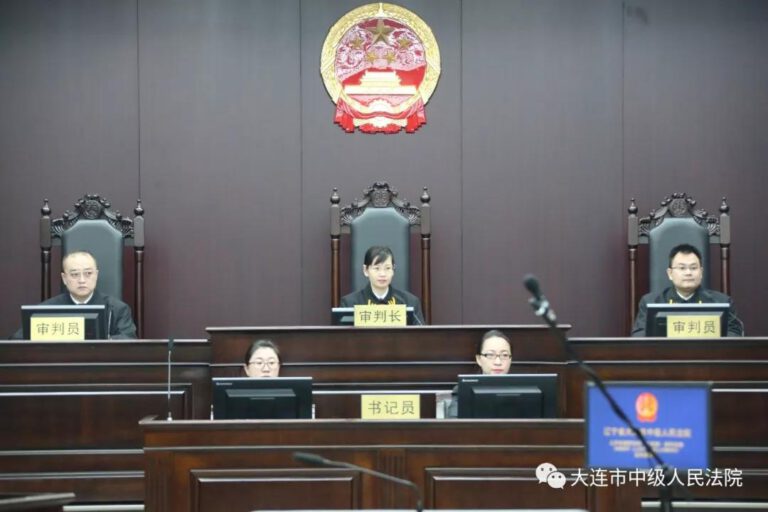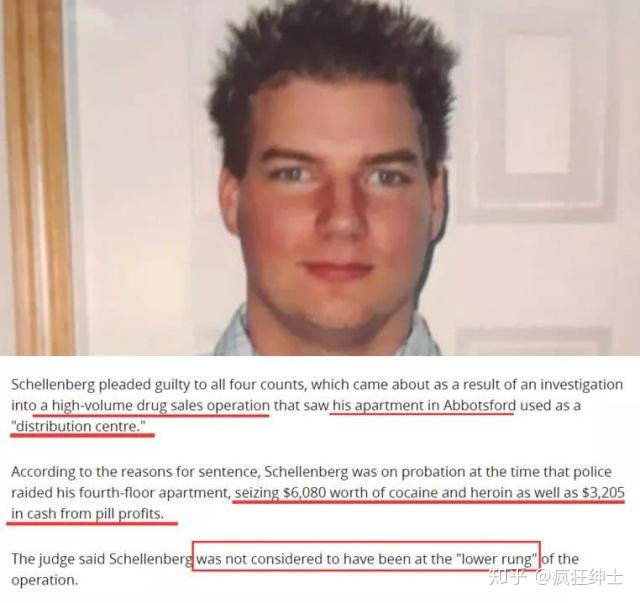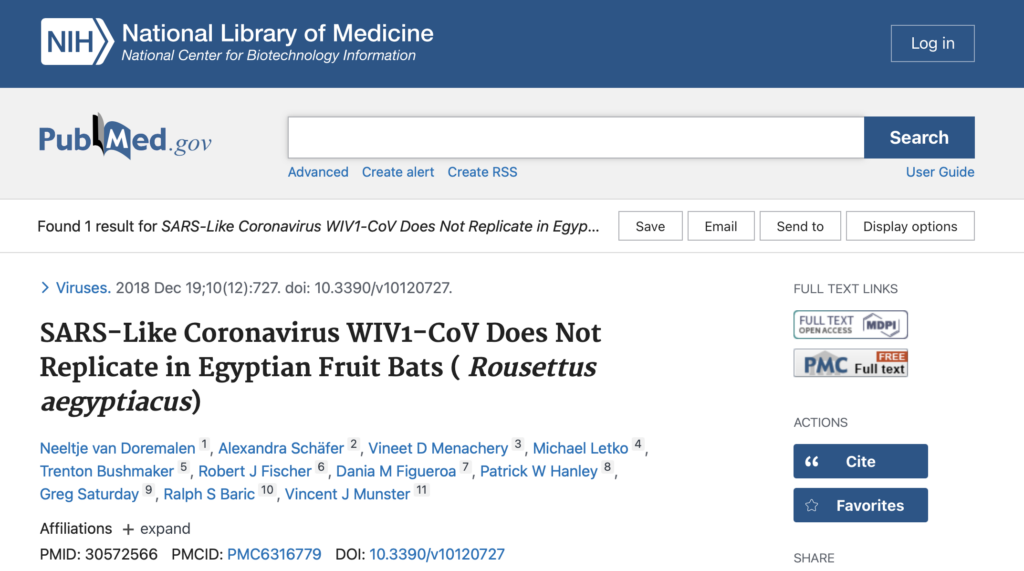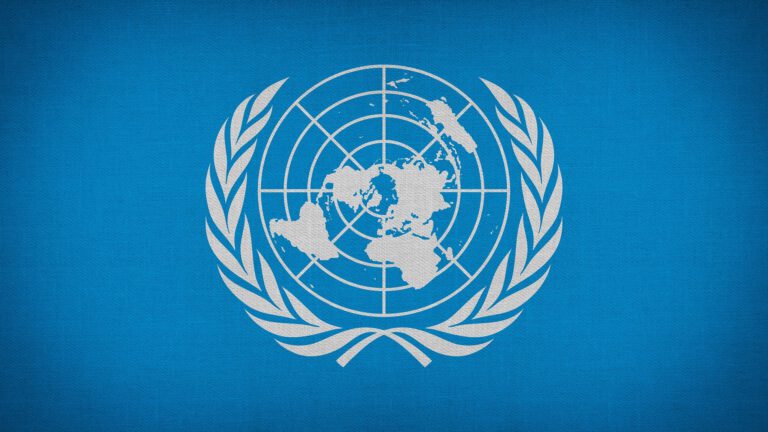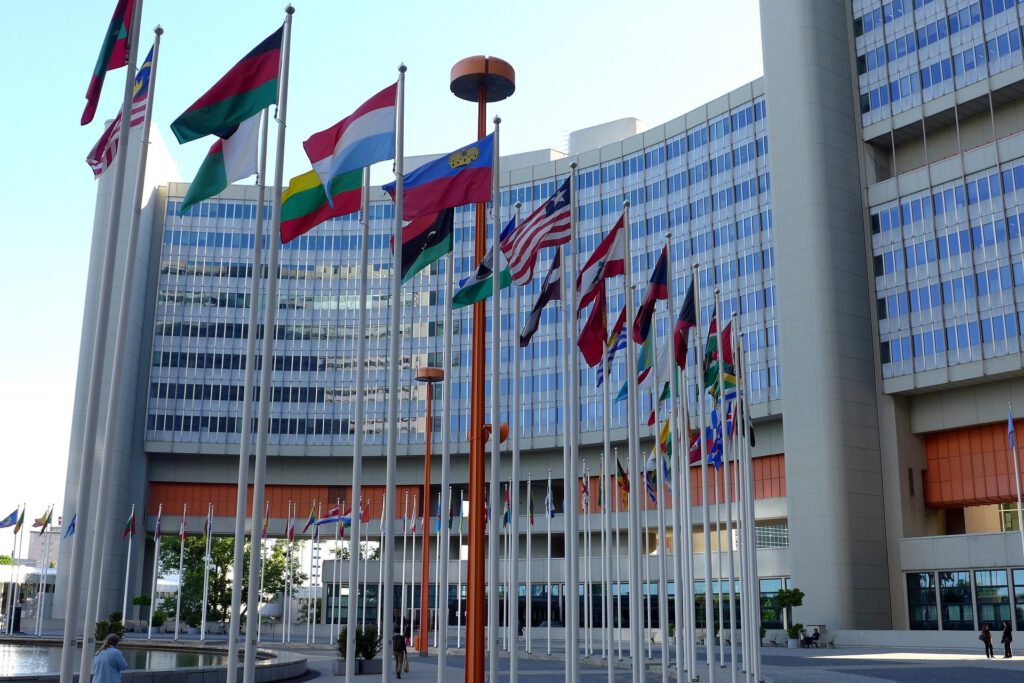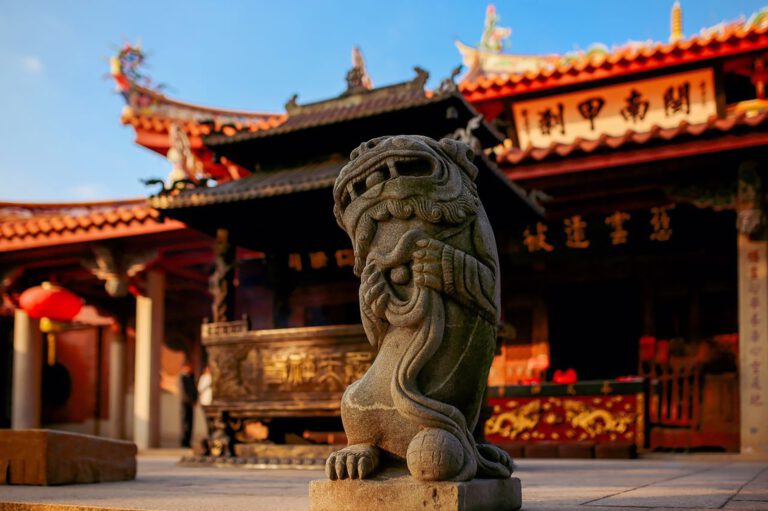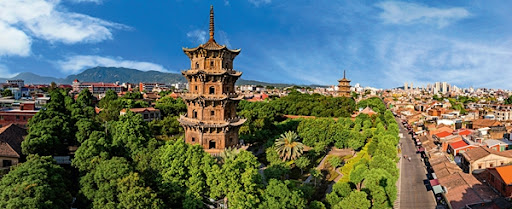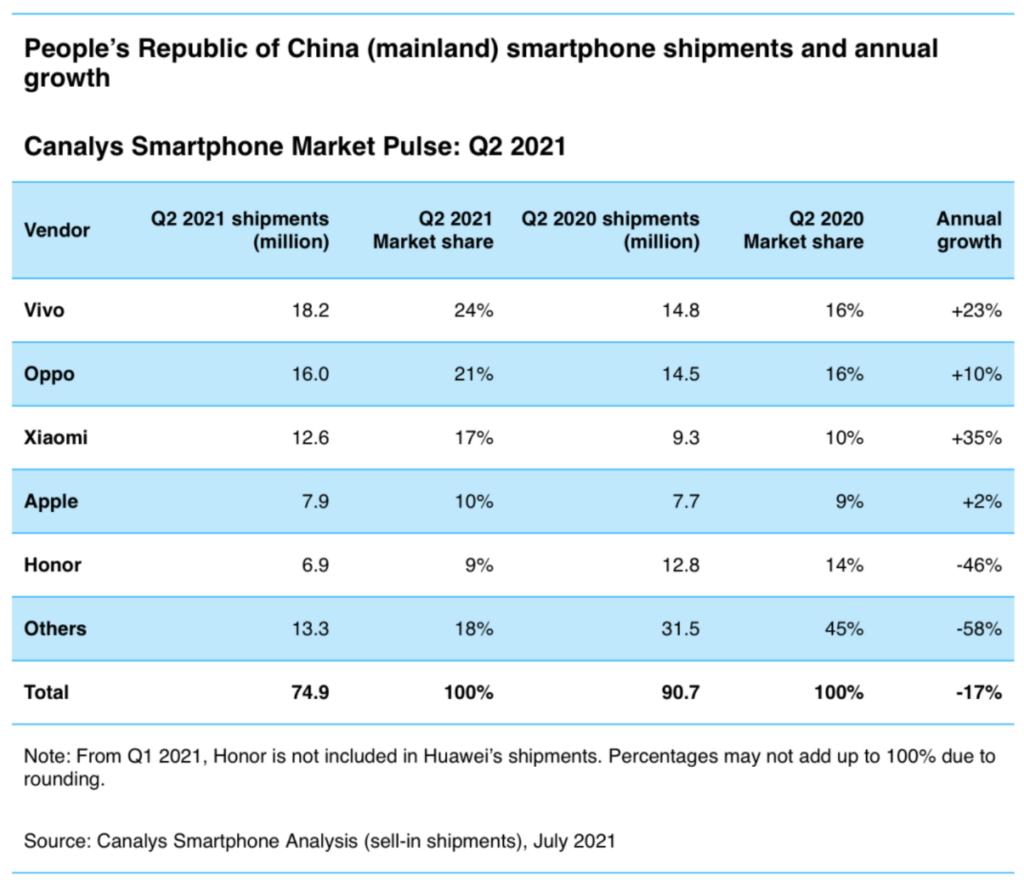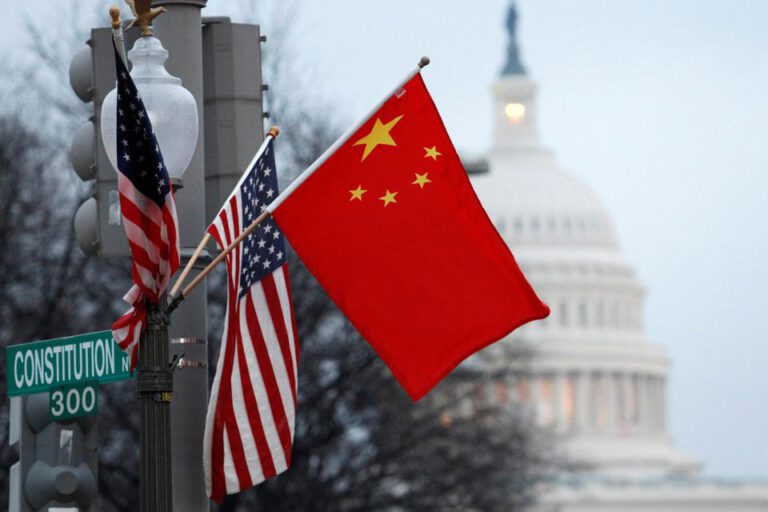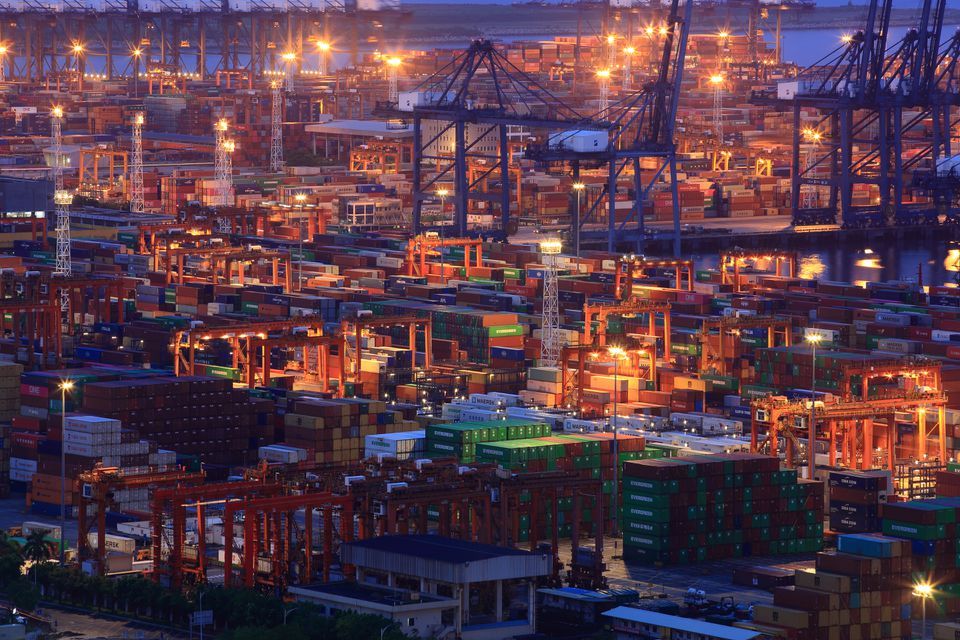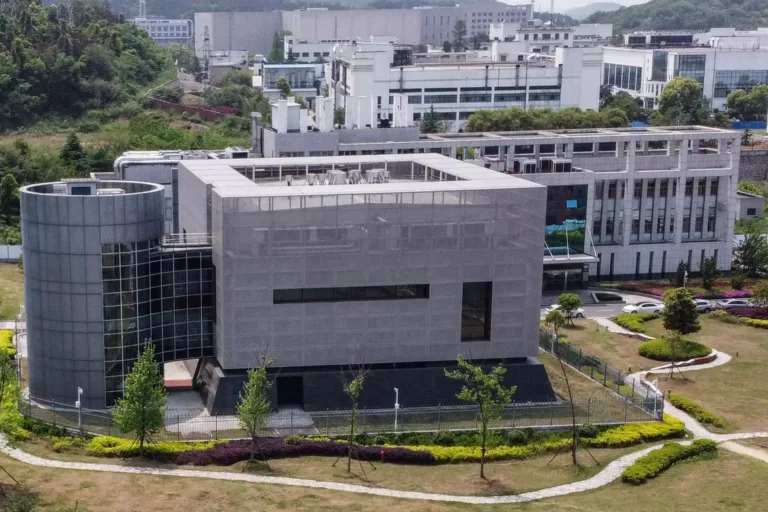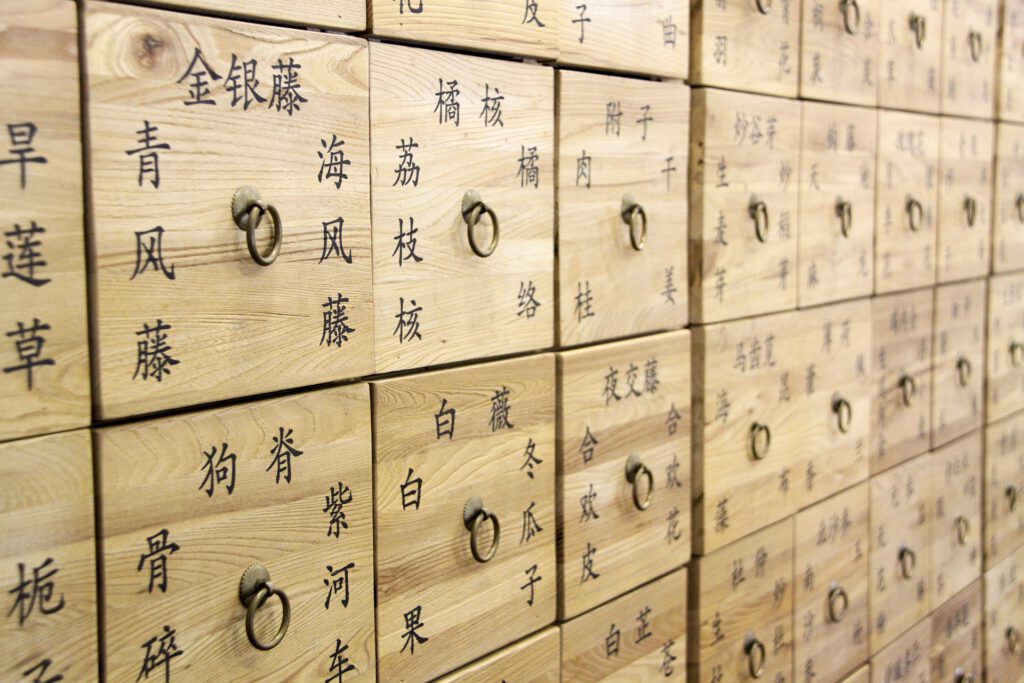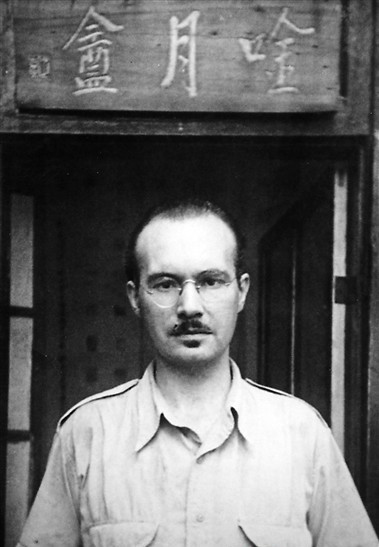
Auch wenn sich die Mentalität der jungen Chinesen ein wenig geändert hat, gibt es immer noch eine gewisse Diskretion und Vorbehalte, über dieses Thema zu sprechen. Und das ist auch gut so. Im Westen geht das Thema über die Privatsphäre hinaus und breitet sich in allen Medien aus … Aber woher soll das kommen, was wir fälschlicherweise als Tabus bezeichnen und was kulturelle Codes sind, die sich einfach von unseren unterscheiden? Vor langer Zeit, aber das Buch bleibt ein Maßstab, hat sich ein großer China-Liebhaber, großer Romancier und Essayist, Robert van Gulik, mit der komplexen Frage der Geschichte der Sexualität in China beschäftigt. Wir wollen dieses wichtige Buch nur kurz vorstellen.
Der niederländische Gelehrte geht von einem Paradoxon aus: Das alte China erlebte eine offene und freie Sexualität, vor allem bei Menschen mit höherer Bildung, und gleichzeitig gab es im Reich der Mitte Hemmungen, darüber zu sprechen.
Natürlich war China schon immer sehr groß und es hat eine sehr lange Geschichte. Unterschiedliche Denkströmungen haben die heikle Frage der Sexualität aufgeworfen: zum Guten oder zum Schlechten.
Der Autor unterscheidet drei Perioden, in denen die Sitten wohl offener waren: die Frühzeit, in der das Matriarchat vorherrschte, die Antike, in der es viele Lehrbücher gab, die sich technisch mit der Sexualität befassen (lange vor dem Kamasutra der Inder), und schließlich das Zeitalter der „erotischen“ Romane.
Weitere Highlights gehen in die andere Richtung: die Anhänger des Konfuzianismus wehren sich gegen diese Idee der freien Sexualität und befürworten die Trennung der Geschlechter; die Invasionen insbesondere der Mongolen (Yuan-Dynastie) und der Mandschus (Qing-Dynastie), die eine Rückbesinnung der Chinesen auf sich selbst und… ihre Sexualität bewirken, und schließlich die Kulturrevolution, die die – zugegebenermaßen interessante – Idee verteidigt, dass die Sexualität zu individualistisch sei und von wesentlichen Fragen der Gesellschaft wie der Produktion ablenke. Dies hat, wie van Gulik erklärt, zu einem gewissen gesellschaftlichen Druck und zu Tabus bei der Äußerung von Gefühlsregungen geführt.
Hängt die oft rührende und schöne Sittsamkeit der Chinesen heute noch mit diesen Tabus zusammen?
Aber van Gulik löst diese Widersprüche ein wenig auf, indem er uns den taoistischen Hintergrund der „freien“ Sexualität des alten China entdecken lässt. Es ging nicht um vulgäre Vergnügungen, sondern in den Sexhandbüchern vom Typ „Bedroom Art“ ging es um eine Sexualität, die mit dem Kosmos verbunden war. Es ging um das Gleichgewicht der Yin- („weiblichen“) und Yang- („männlichen“) Kräfte. Das Schlafzimmer war der Mikrokosmos, der den Makrokosmos des Universums widerspiegelte.
Ein großer amerikanischer Schriftsteller, Henry Miller, griff das im 20. Jahrhundert auf.
„Sex war bis 1644, dem Zeitpunkt der Mandschu-Invasion, eine Frage des Gleichgewichts der Naturkräfte“, erklärt van Gulik, der auf schlüpfrige Werke wie das Jin Ping Mei verweist, „aber das Licht schien dort am hellsten. Es galt als unanständiges Verhalten“, da den Chinesen bewusst war, dass diese Praktiken einen Niedergang erfuhren.
EINE „KOSMISCHE“ SEXUALITÄT?
Doch wie kam es zu dieser Idee der Spiritualisierung der Sexualität?
Natürlich gibt es auch die Gravierungen auf den Schulterblättern von Rindern oder auf den Panzern von Schildkröten, die aber nicht sehr erhellend sind.
Und doch verraten die Vorfahren der klassischen chinesischen Schriftzeichen schon sehr früh Erstaunliches über die Sexualität in China vor 3.000 Jahren.
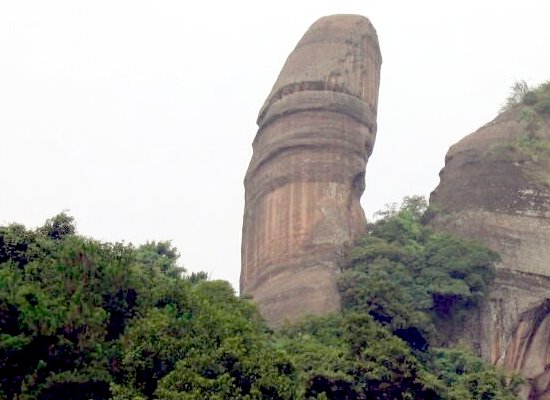
Alles deutet darauf hin, dass die ersten chinesischen Gesellschaften den Frauen in einem matriarchalischen System eine vorherrschende Rolle zuwiesen. Ein chinesisches Schriftzeichen aus dieser Zeit zeigt jedoch einen „Mann, der eine Frau am Ohr zupft“ und damit seine Bereitschaft zeigt, sie zu heiraten. Im Gegensatz zu älteren Gemälden, in denen der Mann durch Weiß und die Frau durch Rot, das Feuer, symbolisiert wird! Die Frau ist mächtig, ursprünglich, „leidenschaftlicher, also dem Mann sexuell überlegen“.
Diese beiden widersprüchlichen Auffassungen von Frauen finden sich im Konfuzianismus und im Taoismus, die in der Geschichte der chinesischen Kultur miteinander konkurrierende Denkschulen sind.
Wenn wir das nun vereinfachen …
Der Konfuzianismus befürwortet eine Gesellschaftsstruktur, die auf einer Familie basiert, die einen Anführer, einen männlichen Führer, Yang, braucht. Die Frau muss sich passiv verhalten und vor allem ihrem Mann männliche Kinder schenken, aus Respekt vor den Vorfahren und der Kontinuität ihrer Nachkommenschaft.
Wir befinden uns in der Zeit der feudalen Gesellschaften, die noch nicht von den Han vereint wurden. Die Vorstellung einer legendären und männlichen Abstammung basiert auf mythischen Figuren, göttlichen Königen.
Der Taoismus hingegen betont die Yin-Kraft, das Negative, die Passivität, das „Nicht-Handeln“ (hier karikiert van Gulik ein wenig). Die Frau repräsentiert die unerschöpfliche, matrixartige Kraft des Universums.
Sie ist die Mutter des Universums, die den Mann durch den sexuellen Akt belebt.
Daher auch die Ausdrücke „tiefes Tal“, „geheimnisvolle Tür“ usw., für das weibliche Geschlecht.
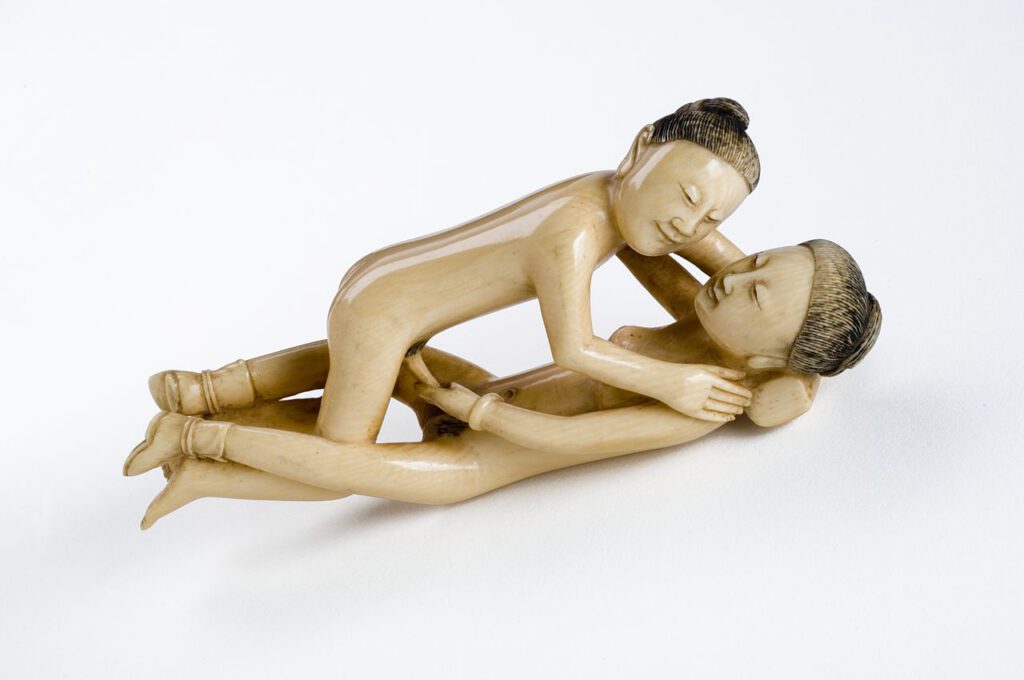
Diese mystischen Vorstellungen von deweiblichen Matrix prägen die Sexhandbücher, die von den prüderen Anhängern des Konfuzianismus kritisiert werden.
Aber die Vorstellung ist tatsächlich die einer universellen Harmonie zwischen Yin und Yang durch den mittleren Weg und darüber hinaus die einer Unsterblichkeit, die durch eine bestimmte Art von Sexualität erreicht werden kann.
Einfacher ausgedrückt, die Frage der Sexualität wird eher im Zusammenhang mit der Gesundheit als mit intensivem Vergnügen betrachtet. Es ist die QI-Energie, ob sie nun Yang oder Yin ist, die uns mit dem Universum verbindet, und es ist diese Energie, die wir im Schlafzimmer pflegen müssen (natürlich gibt es auch Meditation und Qigong).
„Das Ziel der Gesundheit und mithin auch der Sexualität ist es, das QI in uns zu stärken, um „DE“ 德 chinesisch für Tugend zu erreichen, diese Kraft, die in Steinen, Pflanzen und Tieren vorhanden ist.“
Eine Frau ist „mächtig“, voller DE. Aber der Druck, der auf ihr lastet, männliche Kinder zur Welt zu bringen, erklärt auch den Hang zur Polygamie (um die Chancen auf ein männliches Kind zu erhöhen) und leider auch ihre Beschränkung auf eine reproduktive Rolle.
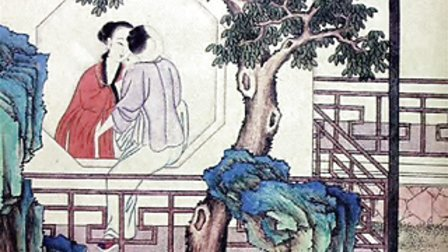
Die Poesie veranschaulicht allerdings die Kontinuität des taoistischen Denkens. Wolke und Regen vereinigen sich sozusagen in Liebe. Ja, die Wolke ist das Ei und der Regen ist das Sperma, das dieses Ei „befruchtet“.
Diese taoistischen Ansichten waren aber auch auf der höchsten Ebene der königlichen Macht präsent.
„Das Paar schlechthin waren der König und die Königin, deren sexuelle Beziehungen von Riten und komplexen Zeremonien geprägt waren, bei denen sich der Mann zunächst mit Dutzenden von Frauen paaren musste, um DE 德 zu bekommen und dann die Königin zu schwängern. Der König der Zhou-Ära hatte also mehrere Ehefrauen unterschiedlichen Ranges und Dutzende von Konkubinen.“
Die Kraft des DE entspringt den Vaginalsekreten der Frauen.



